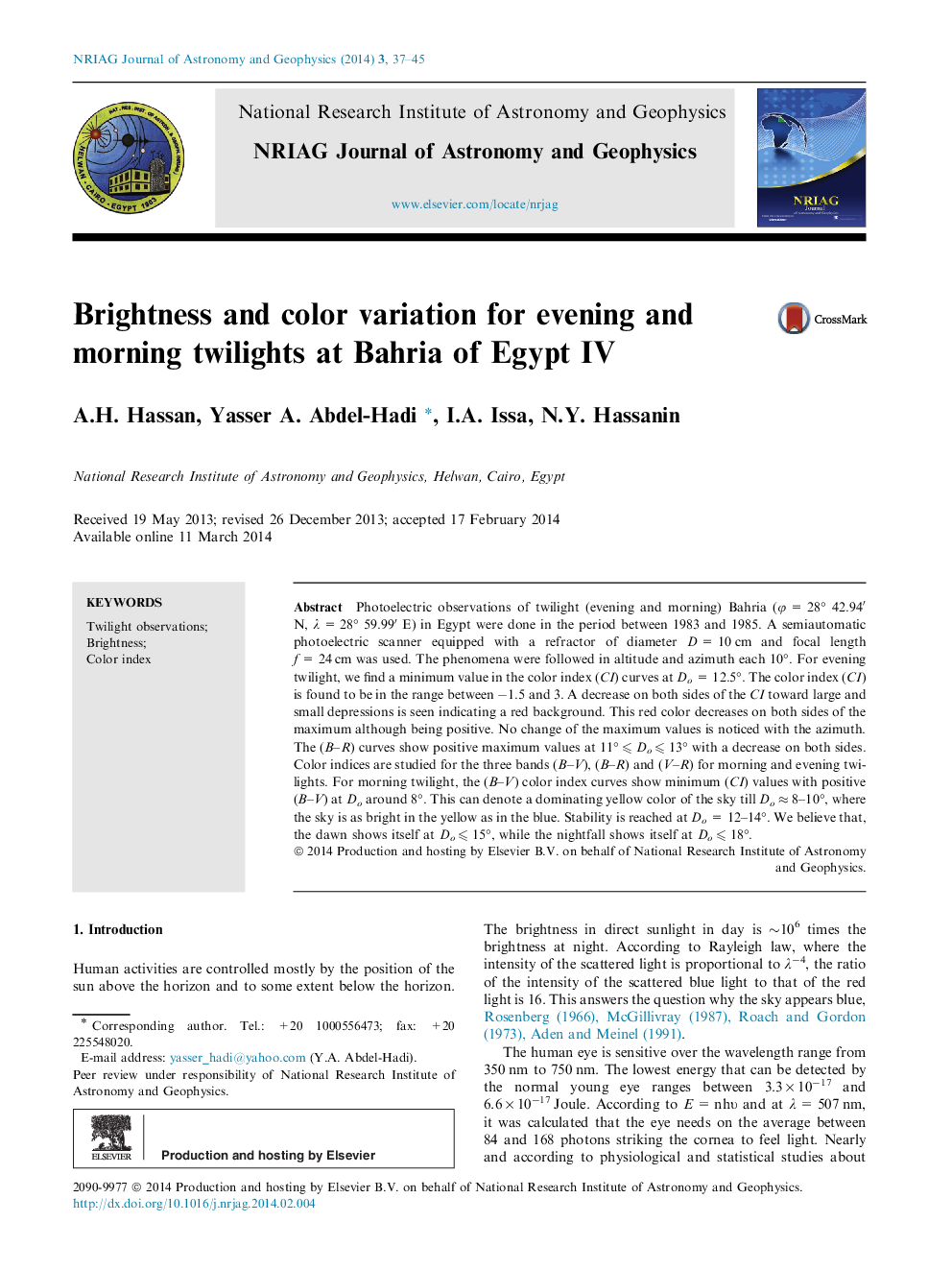| Article ID | Journal | Published Year | Pages | File Type |
|---|---|---|---|---|
| 1780630 | NRIAG Journal of Astronomy and Geophysics | 2014 | 9 Pages |
Photoelectric observations of twilight (evening and morning) Bahria (φ = 28° 42.94′ N, λ = 28° 59.99′ E) in Egypt were done in the period between 1983 and 1985. A semiautomatic photoelectric scanner equipped with a refractor of diameter D = 10 cm and focal length f = 24 cm was used. The phenomena were followed in altitude and azimuth each 10°. For evening twilight, we find a minimum value in the color index (CI) curves at Do = 12.5°. The color index (CI) is found to be in the range between −1.5 and 3. A decrease on both sides of the CI toward large and small depressions is seen indicating a red background. This red color decreases on both sides of the maximum although being positive. No change of the maximum values is noticed with the azimuth. The (B–R) curves show positive maximum values at 11° ⩽ Do ⩽ 13° with a decrease on both sides. Color indices are studied for the three bands (B–V), (B–R) and (V–R) for morning and evening twilights. For morning twilight, the (B–V) color index curves show minimum (CI) values with positive (B–V) at Do around 8°. This can denote a dominating yellow color of the sky till Do ≈ 8–10°, where the sky is as bright in the yellow as in the blue. Stability is reached at Do = 12–14°. We believe that, the dawn shows itself at Do ⩽ 15°, while the nightfall shows itself at Do ⩽ 18°.
